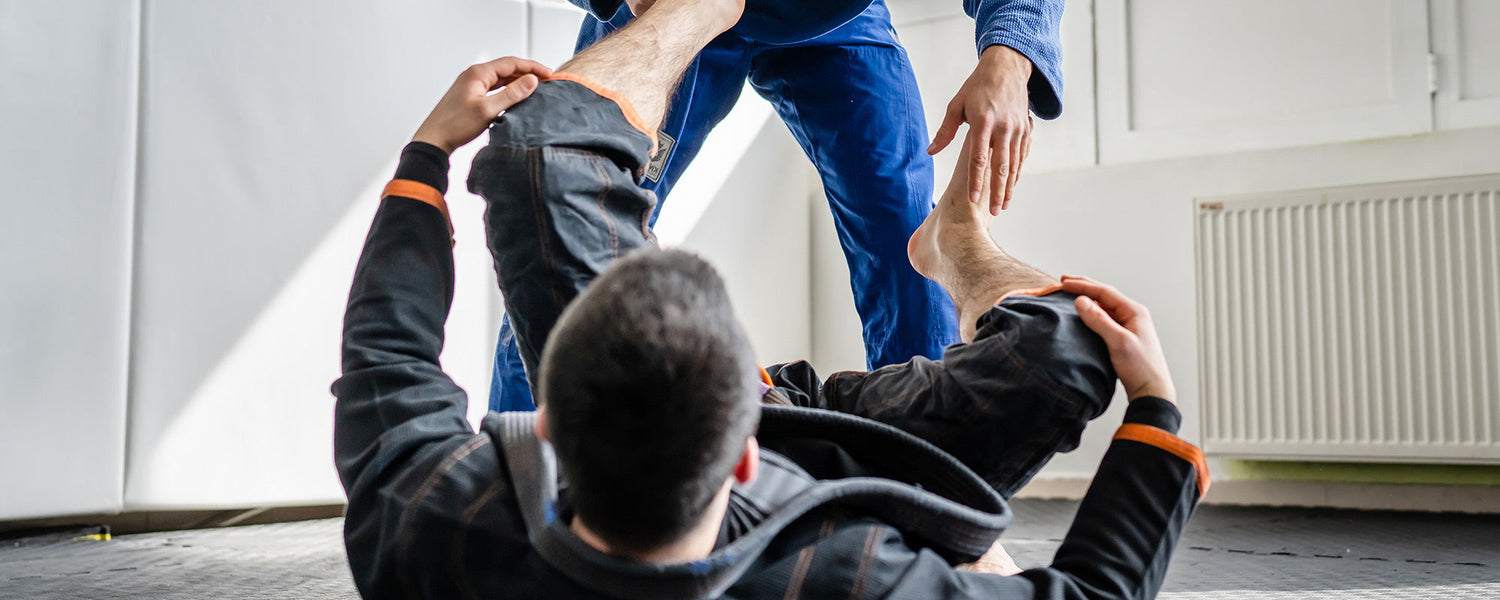Table of content
What makes you feel safer than anything else? Well, the answer is: you are on your own. Brazilian Jiu-Jitsu brings the excitement and courage to feel stronger and controlled.
These martial arts help you to learn all the ways of self-defense. There is no extensive punching or kicking intended in BJJ. So, escaping is a way to pull out from the submissions.
However, submissions are the part of BJJ that makes it even more exciting and fun martial art. Though, learning submissions and escaping is crucial for all white belts. Perfect timing and technique are the keys to make your escaping revolutionary.
Although, a practitioner will be facing a hard time if he or she lacks the ability to escape bad positions. This can affect their progress in art.
In the beginning, escaping shouldn’t look like fun to you, but once you get good at them, they become fun and exciting.
Moreover, you’ll become more comfortable attempting submissions, once you’ve got a solid arsenal of escapes.
In this article, we will discuss 3 escapes in BJJ you should master as a beginner.
1. Escape from Mount
Mount is the most frequent position that white belts find themselves in often. In the mount position, a student sits on the opponent’s chest with the knees compressing tightly against his or her sides.
Certainly, it is very uncomfortable being stuck under a strong mount. However, it is probably important to learn to escape from this mount. The trap and roll escape are the first mount that a white belt should learn.
2. The Trap and Roll Escape
The trap and roll escape are one of the most effective escapes for Brazilian Jiu-Jitsu beginners. Henceforth, it is undoubtedly an excellent self-defense technique and would be effective for all levels of BJJ martial art.
The trap and roll escape work with the technique of trapping the opponent’s posting hand and foot. This eliminates the opponent’s ability to place his or her hand and foot on the surface to prevent being rolled over.
Following are the steps to perform the trap and roll escape:
- Mounting from the bottom, grip your opponent’s triceps by using the hand that is closest to the side which you want to sweep your opponent.
- By holding your opponent’s triceps, grab the wrist of the same hand with your other hand, holding it firmly to your chest.
- On the same side as your opponent’s confined arm, locate your foot outside and against your opponent’s foot, holding it firmly to your chest.
- Push your hips upside and roll in the direction of your opponent’s trapped arm.
Also read: Top 5 Sweeps for BJJ Beginners
3. Escape from the Back Mount
The back mounting position is considered the most dominant position in Brazilian Jiu-Jitsu. In this mounting, one student wraps his or her legs around the opponent's waist.
And then comes the seat belt grip, which is really famous and got its name from its gripping style. However, in a seat belt grip, one arm of the student is placed over the opponent’s shoulder and the other arm is placed under the opponent’s opposite armpit.
The hands are clasped on the front side of the opponent’s chest. The back mount is vulnerable and the person gets trapped in a variety of submissions and chokes.
Hence, a white belt must learn how to escape the back mount.
4. Bridge and Shrimp Escape
The shrimp and hip escape are integral to many Brazilian Jiu-Jitsu techniques. It can be considered as the best way to escape the bad positions. The bridge escape is a common but powerful movement, likewise.
Combining them both originates a back mount escape that all white belts should learn. Following are the steps to learn the bridge and shrimp escape:
- Having your opponent on your back, tuck your chin on your chest, and place your hands in a cross position inside your opponent’s seatbelt grip.
- Get into the bridge position by pushing up your hips.
- Look over the shoulder opposite your escaping side without separating the ching from the chest.
- Flutter your shoulders towards the floor.
- After your back gets closer to the ground, grab the pant leg of your opponent and extend it to prevent your opponent from following you.
- Place your back flat on the ground.
- By placing your back on the ground, shrimp away from your opponent. Push away your opponent with your hands as you shrimp away.
- After shrimping away successfully, you should either spin away towards your opponent, establish a guard, remain on your back, and attempt to take the top position.
5. Escape the Triangle Choke
Being caught in a triangle is definitely no fun. It is a familiar feeling to most BJJ beginners. Struggling to break free while having your opponent’s legs tighten around your neck is a dreadful feeling.
But favorably, the elbow-down escape is the solution to escape a triangle choke.
6. The Elbow Down Escape
The elbow down is the first escape that white belts should learn to escape the triangle choke. This escape is so effective and makes it hard for your opponent to finish his choke by not letting him exert the right amount of pressure on your neck.
Following are the steps to perform the elbow down escape:
- After choking around your arm and neck in a triangle by your opponent, place the elbow of your trapped arm against his leg, consequently preventing your opponent from pulling your arm across your body.
Save your trapped arm by doing this, it may be the potential target for armbars and wrist locks.
- Try to move forward with your chest as you are trying to pass through the center of your opponent’s triangle.
- By moving forward, you will be able to pull back your elbow against your opponent’s leg. The combination of both movements will place pressure on your opponent’s ankles, and the triangle will open eventually.
- After your opponent separates his or her ankles, walk your body in the opposite direction of your previously trapped arm. By doing that, you will be allowed to pass your opponent’s guard and establish side control.
7. Final Words
Escape may be flashy only for submissions, but it's a very important part of BJJ. If your BJJ arsenal has a secure escape set, you'll be trapped in a bad position and you don't have to avoid new attempts. Remember that the best attack may be a good defense!












Leave a comment
This site is protected by hCaptcha and the hCaptcha Privacy Policy and Terms of Service apply.